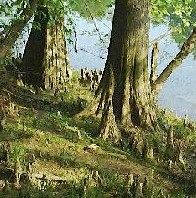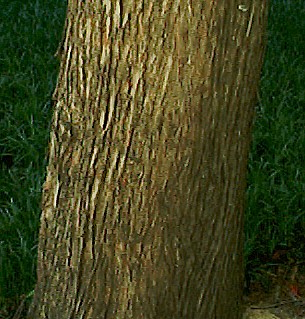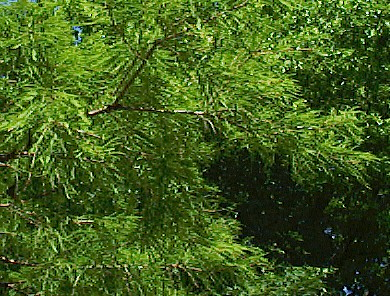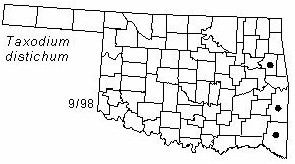


Large deciduous coniferous tree to 30 m (100 ft) tall and 3 m (10 ft) in diameter. Bark brown, with long fibrous ridges peeling in strips. Twigs very thin, flat, green, deciduous. Buds very small, brown, globular. Leaves needlelike, crowded on thin twigs (giving a featherlile appearance), 1-2 cm (0.4-0.8 in) long, dull pale green, remaining attached to the twig which drops off in the late Fall. Cones 1 or 2 at end of branch, round, about 25 mm (1 in) in diameter, composed of several 4-angled flattened scales which fall separately at maturity.
Distribution: Native to the Mississippi Valley north to southern Illinois and the Coastal Plain from Delaware to Mexico.
Habitat: Wet soil and shallow water along streams, lakes, and swamps.
NWI status: OBL
Comment:The wood is extremely resistant to decay and is widely used in structures that are exposed to wet conditions. Bald cypress grows well in cities and is used as a landscape tree. The presettlement range in Oklahoma was probably only along the Little River and its tributaries in McCurtain county, but it has been planted in numerous other places and seems to have become established in LeFlore and Cherokee Counties. Taxodium is derived from a Greek word meaning "yew-like"; distichum means "two-ranked" and refers to the leaves.
Distribution in Oklahoma: 
BACK
NEXT
RETURN TO INDEX
Last update: 9/20/99
 Go to Oklahoma Biological Survey Home Page
Go to Oklahoma Biological Survey Home Page
 Disclaimer
Disclaimer